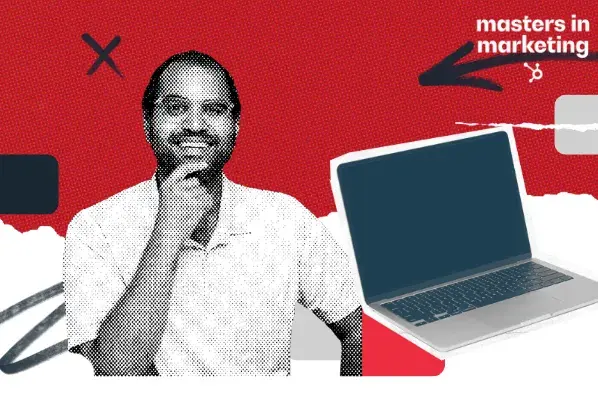9 Trends We're Watching in the Coming Months
1. Gifting
Forget loyalty points — gifting is the new customer retention strategy. As remote everything continues to rise, keeping connected to clients and loved ones will be key.

Source: &Open
Gifting powerhouse 1-800-FLOWERS had a record-breaking year in 2020, and venture capital is flowing into startups like &Open ($7.2m last May) and Gracia (~$14m since its 2017 launch).
Another new player, Goody, sent 10,000 gifts in its first two months and has raised $32m since its 2020 launch. Co-founder Edward Lando told TechCrunch that the app serves as an additional acquisition channel for early D2C brands and a “giant shopping mall” for Gen Z consumers.
Companies will also use gifting to target employees, since worker retention is at an all-time low, and the average cost of replacing an employee is about seven months of their salary.
Wellbox, for example, is a platform for businesses to send gifts to their workers that made $4m+ in revenue in its first year.
2. Direct Mail Marketing
Seth Greene, the bestselling author of seven marketing books, told Trends.co that “with all the changes in online media platforms like Google and Facebook, direct mail delivers better results than ever, with fewer restrictions.”
Our research backs this up, particularly when it comes to “digital interactive” — physical mail used to drive readers online — where response rates are ~9%-10%, roughly double what they were five years ago.

Source: 25 Direct Mail Trends for 2021
Some niches we expect will emerge in this space include:
- Voice-activated calls to action: Integrating smart-speaker apps into direct mail campaigns so readers can take action with an Alexa command
- VR integrations: Physical mail that pairs with a VR headset to provide deep, interactive experiences
- Old-school postcards: Direct mail marketing companies focusing on postcards, like PostcardMania, which reportedly made ~$84m in revenue last year
3. Return of Retro
The resurgence of direct mail is just the tip of the iceberg when it comes to the bigger trend of all things retro.
Subscribers to the r/Retro subreddit have doubled to 10k+ since 2020, and r/80sDesign has hit 86k+ subscribers.
Retro search terms are also going wild on Amazon. For example, weekly searches for “retro home decor” have increased 290% in the US in the last year, according to Jungle Scout.
Here’s how we expect to see the trend manifest over the next 6 months:
- Shutter-Lovin’: Film, old-school cameras, and darkrooms
- Experiences: Roller rinks and arcades
- Gaming: Old-school games and accessories
- Advertising: Brands leveraging the ’80s aesthetic in their ads
 Can you tell which are from the 1980s vs. the 2020s? Only the top right one is original ’80s (Source: Eye on Design)
Can you tell which are from the 1980s vs. the 2020s? Only the top right one is original ’80s (Source: Eye on Design)
4. Audio SEO
The world of podcasts is growing faster than the entire internet did back in the early 2000s. Spotify alone now hosts 3m+ shows (that’s ~43x the number of titles on Netflix, Disney+, and Apple TV+, combined).

Source: Internet Live Stats and The Podcast Host
But the tools that help listeners discover new content haven’t kept up.
Sixty-five percent of people who’ve never listened to a podcast say the reason is that they don’t know where to start. Meanwhile, great new shows struggle to get recognition, and audiences tire of seeing the same old suggestions.
Audio search is due for an overhaul. Some solutions we may see emerge in the coming months include:
- Audio search engines, like Fathom, which recently raised $15m for their AI-driven podcast player and audio search engine
- Tools that let podcasters turn audio into snackable visual content for platforms like TikTok, similar to Audiogram
- Audio SEO tools, like the Ahrefs or Keywords Everywhere equivalent for audio
- Interactive/immersive podcast apps, like Entale and Adori, which allow podcasters to include relevant links, images, polls, and offer codes so that they appear on the listener’s screen at the right moment
5. NFT-Powered Subscription Services
The Bored Ape Yacht Club (BAYC) is one of the most popular digital art collections in the world. BAYC NFT owners have exclusive licensing and commercial rights to their apes, leveraging many token holders to build their own startups.
One such startup is the Bored Breakfast Club. It’s a coffee subscription service and NFT collection that uses NFTs to establish an exclusive online community of coffee enthusiasts.
In their subscription model, anyone who owns one of the 5k Bored Breakfast Club NFTs is entitled to receive free shipments of exclusive coffee blends.
The NFTs also unlock access to an online community, live events, content, and discounts on additional bags of coffee.

Source: Bored Breakfast Club Website
Many big brands like Cameo, Wrangler, and Timemagazine are already experimenting with NFTs for exclusive community access, but the Bored Breakfast Club is one of the first to tag on a subscription component.
It’s still early days, but should the model prove successful, it will open up a whole new world of potential NFT subscription products, way beyond coffee.
6. B2B Influencers
The B2B influencer space is currently underdeveloped and largely unmonetized. While the overall influencer marketing industry was pegged at ~$9.7B in 2020, the bulk of that was focused on B2C campaigns.
But that is set to change, as ~80% of B2B brands surveyed in 2020 say they plan to either maintain or increase their influencer spend.
Not surprising, since research from Demand Gen shows that B2B clients consider sponsored third-party or co-branded content more trustworthy than content straight from a vendor.

Source: Oktopost
We expect to see a number of tools and services emerge to help brands identify and manage influencers and document their influencer strategy.
This could take place in B2B industries where subscription spending is highest, such as engineering, sales, HR, and customer service.
Influencer marketing more generally might grow stronger with each new generation. While 26% of social media users ages 25-34 have purchased a product marketed by an influencer in the past three months, 33% of social media users in the 18-24 age range have done the same.
7. Virtual Pop-Up Shops
Pop-up shops in the metaverse are a thing now.
Italian fashion brand Hogan recently took part in Decentraland’s Fashion Week with a virtual pop-up store, and jewelry label Pandora teamed up with Animal Planet to launch an in-game virtual pop-up called “Pandora Island.”
The new metaverse shopping industry could continue to grow with consumer interest. In a HubSpot survey of more than 1k consumers, 30% of participants said more brands should consider virtual stores in the metaverse.
While we’ll definitely see more of these, brands won’t necessarily need to dive headfirst into the metaverse in order to participate in the trend.
A virtual pop-up shop is essentially anything that creates a unique online shopping experience for your customers, separate from your existing website. This could be an event or even a landing page dedicated to a new product line.
They first gained popularity as an alternative to the real deal during national lockdowns, and, despite a dip in 2021, interest is picking up again.
Some big bands that have already experimented with this format include Lancôme, Hoover, and Dunkin’.

Source: Dunkin’Shop
8. Luxe Eco-Friendly Products and Packaging
Conscious consumption is in vogue. Younger generations in particular are driving up demand for products like this 0.56-oz. container made from recycled plastic ($14) and this chair manufactured from old fishing nets ($375).
They are also demanding more from brands, and are willing to pay to save the planet.
While eco-friendly shampoo bars tend to be more cost-effective than traditional shampoo, consumers are happily splashing out for the high-end options: A single Viori bar costs $16, ~3x the price of a comparable amount (20 oz.) of Dove shampoo.

Source: Subreddit Stats
We expect that eco-friendly packaging will also boom as the rapid rise in ecommerce continues to drive demand for sustainable packaging.
Solutions could include compostable packaging from leftover bamboo and sugarcane pulp, like those made by Ecoinno, which recently raised $6m in funding.
9. Gamified NFT Marketing
NFT platform Neon launched the world’s first NFT vending machine back in February.
The machine accepts fiat currency, making it possible for people to invest in NFTs using their credit card — without the need to convert to crypto first.
We expect to see similar NFT marketing initiatives like arcade machines or mobile games that allow players to collect NFTs as they play.
Louis Vuitton has already released a “Louis the Game” mobile app, which includes 30 embedded NFTs that could only be collected by playing the game.
GAP is another big name brand that has incorporated a gaming component into their NFT collection to encourage continued customer engagement. 
Source: Twitter
How to Stay Up to Date
Staying up to date on today's trends and data can be crucial to building marketing or business strategies that meet your audiences where they are. But with trends always moving quickly, the idea of tracking them can be overwhelming. Here are a few handy resources that can help your brand in its quest to stay fresh, relevant and up to date.
- HubSpot's State of Consumer Trends Series: This month, HubSpot will be publishing a series of blog posts, like this one, and a brand new data-driven PDF all about the latest consumer behaviors, preferences, shopping habits, and trends marketers and brands need to know about in the coming month. Click here to see our State of Consumer Trends Report, where you'll find links to the content in our series and a handy, free PDF.
- Subscribe to Trends.co: Want to learn about trends that impact all areas of business and step up your game even more? Check out and subscribe Trends.co today to learn all about the business ideas, innovations and -- well -- the trends that are changing the game in your industry.
Marketing Trends



![4 shopping trends to expect in uncertain financial times [data + how marketers can adapt]](https://53.fs1.hubspotusercontent-na1.net/hubfs/53/consumer-recession-spend.webp)
![The Future Consumer: State of Consumer Trends in 2025 [Data from 700+ Consumers]](https://53.fs1.hubspotusercontent-na1.net/hubfs/53/consumer%20trends%202023-1.png)
![The Top Marketing Trends of 2025 & How They've Changed Since 2024 [Data from 1400+ Global Marketers]](https://53.fs1.hubspotusercontent-na1.net/hubfs/53/Untitled%20design%20(68).jpg)


![4 Marketing Trends & Strategies That Might Not Survive in 2025 [New Research]](https://53.fs1.hubspotusercontent-na1.net/hubfs/53/marketing%20trends%20that%20might%20not%20survive%202024.png)
![The HubSpot Blog's Marketing Leadership Report: How 720+ Brand Leaders Will Get Ahead in 2025 [+ How to Join Them]](https://53.fs1.hubspotusercontent-na1.net/hubfs/53/Copy%20of%20The%20Future%20of%20Work%20is%20Flexible%20%5BImage%2c%20IG%5D%20(598%20%C3%97%20398%20px)%20(595%20%C3%97%20400%20px)%20(517%20%C3%97%20517%20px).png)
![Top Shopping Trends of 2024 & How They've Changed [New Data]](https://53.fs1.hubspotusercontent-na1.net/hubfs/53/shopping-trends_3.webp)

